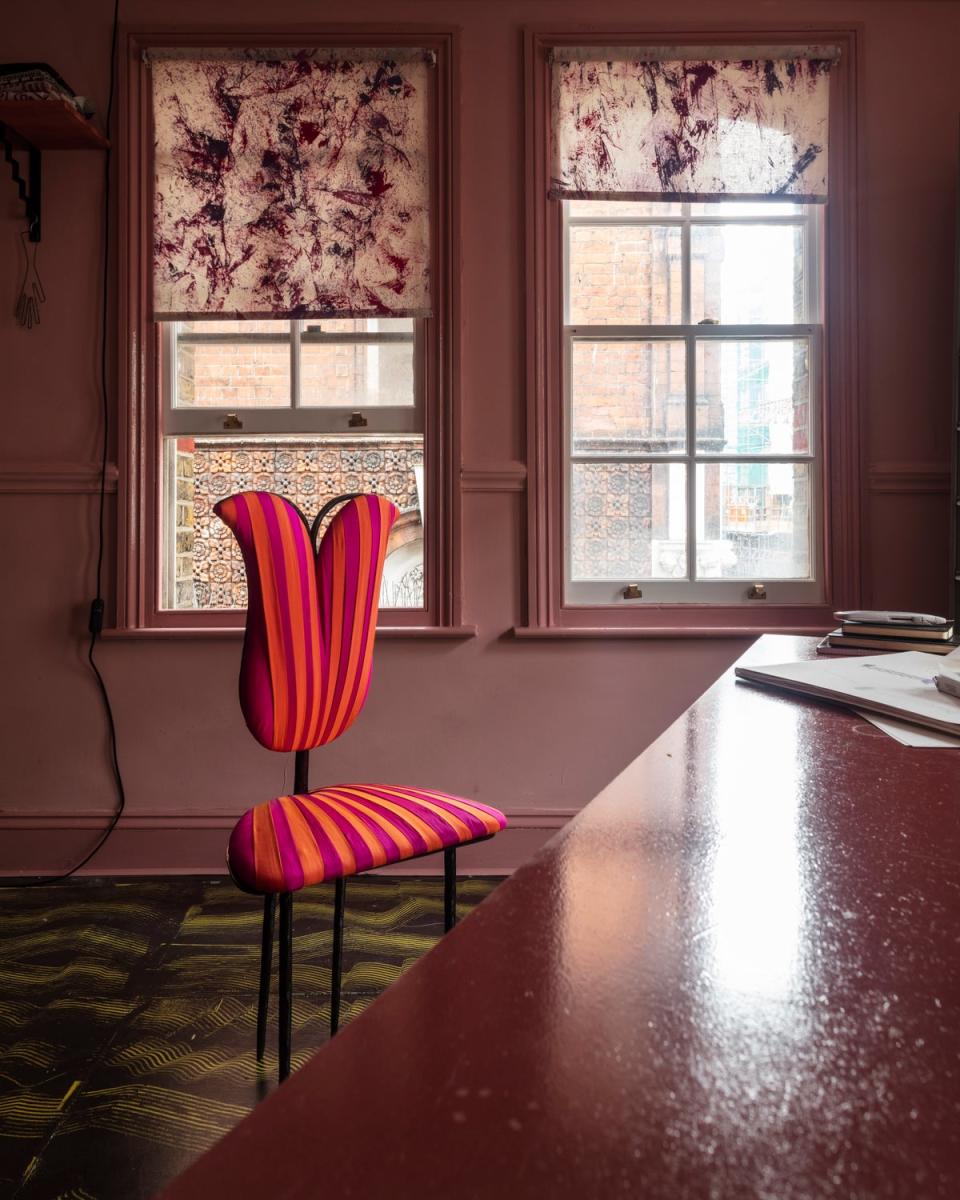Inside Man: how to use fabric in your home furnishings whatever your budget

For far too long, I was a bit scared of soft furnishings. Not knowing my baroness from my box balloons when it came to curtains, covers or even cushions, I was intimidated by what seemed to be a world of posh, expensive luxury that was out of reach for me and my clients.
It was a friend’s comment when visiting my first showroom nine years ago that brought me up short: “It looks great in here but you need some soft furnishings.”
She was right — the closest thing to upholstery in that room was a rubber band Tom Dixon dining chair, but my fresh-out-of-art-school self had a lot to learn before mastering the difference between damask and brocade.
Reader, I stumbled so you don’t have to.
In the years since that first foray into design, I have come to realise that the right fabric is the best way to tart up the very ugliest item in your home.
Case in point: a recent client tasked me with jazzing up his office chair. The words “polish” and “turd” were the first two that sprang to mind, but I do love a challenge. And so I turned that scourge of the work-from-home era from ergonomic into ergo-mazing. He now sits at a two-tone red leather beauty when typing up his Word documents, every email is now sent with a stately flourish.
Leather is a particularly good option for disguising undesirable chairs because it holds its shape for decades. A good upholsterer or machinist should be able to turn your wildest designs into reality (or tell you how to modify them).
Of course leather is expensive, but it will last a long time.

If your budget is tighter, then Shepherd’s Bush Market is the best place in London to find cheap and cheerful bolts in bright hues, and if you’re handy with a sewing machine, a few cushions could set you back just a few pounds.
Sunbury Antiques Fair is another good place to source interesting, inexpensive options that will add instant texture, pattern and interest to a room.
That said, if you can afford it, I do think a dash of really good fabric (as much as you can afford) will give your interiors an elegant, professional edge. Let’s face it, you can spot top-quality satin a mile off, and the same can be said of synthetic pretenders, too.
For my money, the most exquisite fabric is sold at Sibyl Colefax & John Fowler on Pimlico Road, which is a dreamy destination for inspiration and, better still, samples. I love nothing more than filling envelopes with little squares of fabulous fabric and my favourite is its iconic Squiggle print, which comes in six colourways.
At £135 per metre it’s not cheap, but a set of cushions would add glamour to any room; make it go further by using fancy fabric on the front and something cheap and plain in a similar weight and texture on the back — John Lewis has lots of good quality options.
Roll-ends are a great way to score some top-of-the-range styles on the cheap — the downside is you don’t get to choose the length. If you’re running a few yards short though, I love to double up on upholstery for a slightly unorthodox but definitely eye-catching effect.
I recently revamped an old chair I found at a market using two shades of silk, a staple gun and some pins. I cut the silk into strips, pinned alternating coloured strips to the seat and back and stapled them in place. The result looks far more sophisticated than the technique used to achieve it.
On a very tight budget my advice is to keep things simple. Calico costs as little as 90p per metre and makes the perfect roller-blind fabric.
You can find roller-blind mechanisms online and can cut them to size to fit most windows. If you’re feeling creative you can even paint your own design. I made eight blinds for my office this way for less than £150, living proof that you actually can make a silk purse out of a sow’s ear.

 Yahoo News
Yahoo News 
